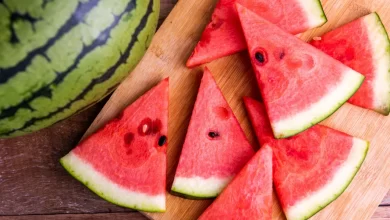Mangoes are a tropical fruit that belongs to the drupe family. This denotes the presence of a single large seed or stone in the center. Mangoes, also known as the “king of fruits,” are one of the world’s most popular fruits. Their sweet, golden flesh is now popular all over the world.
Sweet facts-meta
- Mangoes were probably cultivated as early as 2000 BCE in India. Mango was introduced to East Asia about 400-500 BCE, was made available on the Swahili Coast in the 14th century, and was brought to the Philippines in the 15th century and by Portuguese explorers to Brazil in the 16th century.
- When the Portuguese traders settled in southern India, they adopted the name for this fruit as manga. Then in the 15th and 16th centuries, when the Britishers were trading with south India, the word mango was born.
- Mangoes are the most consumed fruit in the world.
- Mangifera indica is the scientific name of this sweet fruit.
- Total world mango production in the world is more than 40 million tonnes, with only 3% of the crop traded around the globe.
- India is the biggest mango-producing country and accounts for 40% of total world production.
- Throughout the world, mangoes are known as the “king of fruits.”
- The heaviest mango on record weighed 3.435 kg (7.57 lb). It was presented by Sergio and maria Socorro bodiongam (Philippines) at the Sunday celebrations pinaka contest in the city of Cagayan de Oro, Philippines, on 27 August 2009.
- There are over 1500 varieties of mangoes grown in India due to having the best weather conditions for this fruit. Over 500 varieties are grown worldwide. Most of them ripen in the summer season.
- The ideal spacing of Mango trees in an orchard is 10 x 10 meters. With this distance, around 82 trees can be planted in one acre of land. In ultra-high-density plantation technique, this fruit is planted at 3×2 m which accommodates 674 plants per acre.
- The fruit takes about four to five months from flowering to fully ripen.
- A 10 to 20-year old mango tree can produce around 200 to 300 mangoes. While 40 years old trees will produce twice mangoes than the age of 20 years.
- The mango tree is the national tree of the southeast country Bangladesh.
- The mango fruit is the national fruit of three countries that include India, Pakistan, and the Philippines.
- The oldest mango tree in the world is located in East khandesh and is believed to be 300 years old, and it still produces fruit at this age.
- The grafted trees grow more slowly than the seedling trees and are often smaller. Grafted trees usually produce fruit in 3 to 5 years in dry areas. Whereas the seedling trees usually take five years to produce fruit.
- The flowers of mangoes are pollinated by insects, and only 1% of flowers will turn into fruits.
- The mango tree can grow pretty much tall as it can grow up to 130 feet with a canopy of 35 feet or more.
- On average, a mango tree can produce fruit for over 40 years or more.
- Alphanso mangoes are considered to be the best mangoes among all species and are widely grown in India.
- The mango fruit and its plant leaves have a special place in Hindu culture and religious ceremonies.
- Dhirubhai Ambani Lakhibag Amrayee is Asia’s biggest orchard and is considered one of the best orchards in the world. Here over 200 species of mangoes are grown, and there are over 1.3 lakh plants. So reliance industries owned by Mukesh Ambani is also the biggest exporter of mangoes.
Nutrition Facts of Mango
Here are the nutritional profile of one 165-gram (g) cup of sliced, raw mango.
- Calories: 99
- Protein: 1.35g
- Carbohydrate: 24.7g
- Sugar: 22.5g
- Fiber: 2.64g
- Fat: 0.63g





